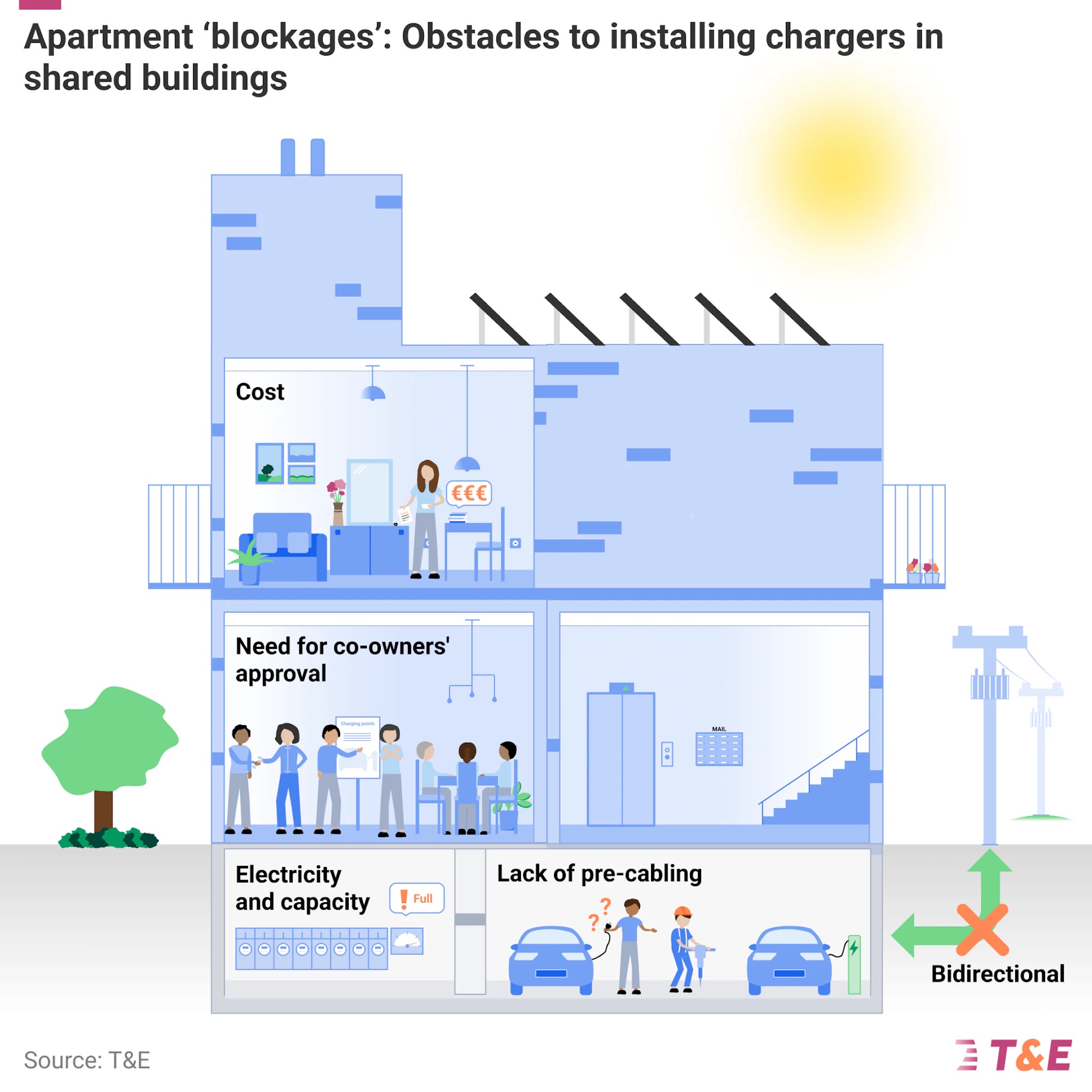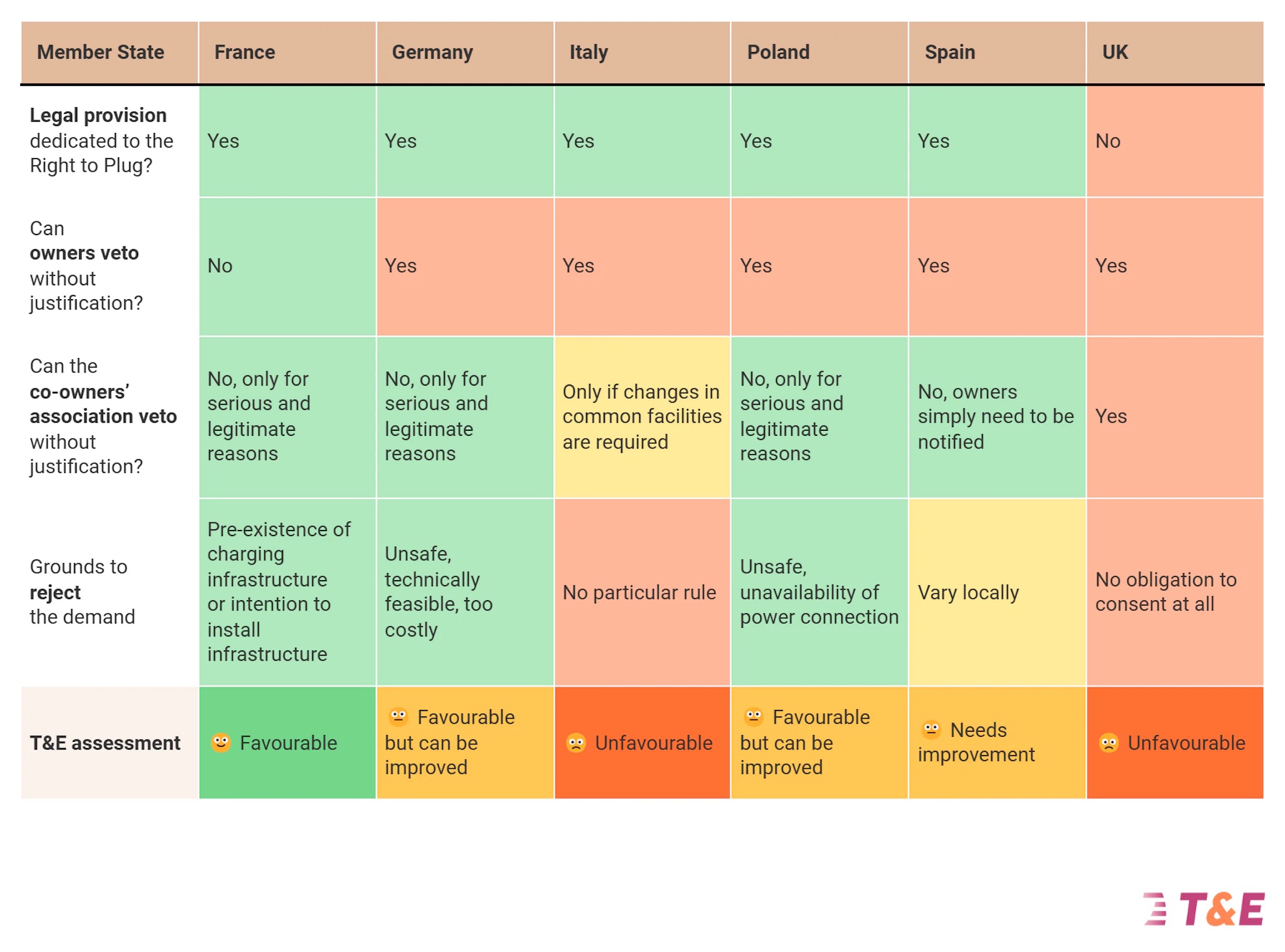
Sign up for daily news updates from CleanTechnica on email. Or follow us on Google News!
T&E analyses the regulatory framework in six countries to see how to overcome obstacles to installing chargers in apartment buildings.
Charging at home will remain the most convenient and affordable way to charge an electric vehicle (EV). But while installing an EV charger at home is quite simple for people living in single-family houses, it can be more challenging for people living in apartment buildings.
The Energy Performance of Buildings Directive (approved in April 2024) sets targets to install EV chargers in buildings with more than 3 parking spaces. But the rules for existing residential buildings, and especially apartment buildings, are too vague and lack concrete targets to guarantee easy and swift access to private charging.
Given this policy gap, it is crucial that EU member states go beyond the EU’s EPBD text and implement a ‘right to plug’ to allow EV drivers living in apartment buildings to install an EV charger at their own cost in their private parking space.
T&E analysed the regulatory framework in 6 countries (France, Germany, Italy, Poland, Spain and the UK), and compiled best to ensure that EV drivers can have seamless access to home charging, whether they live in a house or in an apartment.
T&E recommendations to member states:
-
Implement a clear and simple right to plug into national law, for both owners and tenants: it should only require notification to the co-owners, unless there are serious and legitimate grounds to oppose it, with a streamlined administrative process.
-
Ensure that all new and renovated apartment buildings are fully cabled for EV charging: pre-cable 100% of parking spaces, adapt the buildings’ electrical infrastructure and upgrade the grid connection to equip all parking spaces, without delaying individual connection requests.
-
Design national strategies to equip existing multi-family buildings: Member states should roll-out strategies to pre-cable existing apartment buildings and set concrete objectives for 2035, in line with the expected local uptake of EVs.
-
Help fund the installation of chargers in multi-family buildings: Member states should subsidise the purchase and installation of charging points to incentivise EV drivers to get an individual charger, and encourage innovative business models covering the upfront costs of equipping all parking spaces.
-
Mandate all new chargers to be bidirectional-ready in all buildings: to allow EV drivers to reduce their electricity bill by charging during off-peak hours with low electricity prices, and by selling back to the grid the stored energy in the EV during peak demand and high electricity prices.
To find out more, download the briefing.
Article courtesy of T&E.

Chip in a few dollars a month to help support independent cleantech coverage that helps to accelerate the cleantech revolution!
Have a tip for CleanTechnica? Want to advertise? Want to suggest a guest for our CleanTech Talk podcast? Contact us here.
Sign up for our daily newsletter for 15 new cleantech stories a day. Or sign up for our weekly one if daily is too frequent.
CleanTechnica uses affiliate links. See our policy here.
CleanTechnica’s Comment Policy






